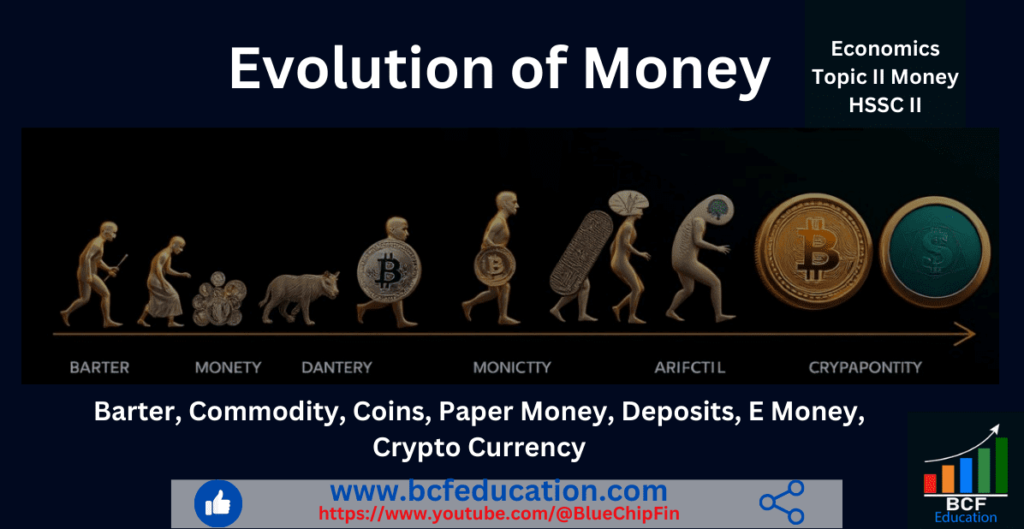The Law of Equal Marginal Utility EMU is a core concept in the cardinal approach to consumer behavior analysis. The Law of Equal Marginal Utility EMU, also known as The Law of Equal Marginal Utility EMU, is a principle in consumer behavior that states a consumer maximizes total utility by allocating their limited resources such that the marginal utility (additional satisfaction) gained from the last unit of currency spent on each good or service is equal. In other words, consumers distribute their expenditures across goods so that each purchase provides equal utility per unit of cost, achieving the most efficient satisfaction of their needs within a budget constraint. This topic is equally important for the students of economics across all the major Boards and Universities such as FBISE, BISERWP, BISELHR, MU, DU, PU, NCERT, CBSE & others & across all the business & finance disciplines.
Table of Contents
The Law of Equal Marginal Utility EMU
Introduction
The Law of Equal Marginal Utility EMU states that consumers will allocate their income in such a way that the marginal utility per unit of currency spent on each good or service is equalized. This principle is a key aspect of consumer equilibrium and utility maximization in microeconomics.
The Law of Equal Marginal Utility EMU is also known:
- The principal of equal marginal utility
- The law of equal marginal return
- Law of substitution
- Law of Indifference
- Gossen’s second Law
- Proportion Rule
- Law of Maximum Satisfaction
- Law of Economy of Expenditure
Assumptions of The Law of Equal Marginal Utility EMU
Two Products
It is assumed that there are only two products consumed by the person while observing the law of equal marginal utility.
Utility can be Measured
It is also assumed that utility can be measured under cardinal approach.
Ceteris Peribus
It is assumed that all other factors such as income, taste etc., remains constant ceteris peribus.
Marginal Utility of Money
It is also assumed that marginal utility of money remains constant while observing this law.
Rational
It is also assumed while observing this law that consumer must be a rational person and he wants to maximize his utility within given limited income.
Tabulated and diagrammatical explanation of the Law of Equal Marginal Utility
It is assumed that consumer has Rs. 5 and he has to spend Rs. 5 on two products wheat and rice in such a way that his marginal utility of both products provides maximum total utility.
| Units of Money | Marginal Utility M.U of Wheat | Marginal Utility M.U of Rice |
| 1 | 12 | 10 |
| 2 | 10 | 8 |
| 3 | 8 | 6 |
| 4 | 6 | 4 |
| 5 | 4 | 2 |
All Possible Scenarios
Option 1
| Rs. Spent on Wheat | M.U of Wheat | Rs. Spent on Rice | M.U of Rice | Total Utility |
| 1 | 12 | 4 | 10+8+6+4=28 | 12+28=40 |
Option 2
| Rs. Spent on Wheat | M.U of Wheat | Rs. Spent on Rice | M.U of Rice | Total Utility |
| 2 | 12+10 = 22 | 3 | 10+8+6 =24 | 22+24=46 |
Option 3
| Rs. Spent on Wheat | M.U of Wheat | Rs. Spent on Rice | M.U of Rice | Total Utility |
| 3 | 12+10+8 = 30 | 2 | 10+8 =18 | 30+18=48 |
Option 4
| Rs. Spent on Wheat | M.U of Wheat | Rs. Spent on Rice | M.U of Rice | Total Utility |
| 4 | 12+10+8+6 = 36 | 1 | 10 | 36+10=46 |
In above four options, it is clear that under option 3, consumer gets maximum total utility of 48 while spending Rs. 3 on wheat and Rs. 2 on rice. Same at these two points of spending Rs. 3 on wheat and spending Rs. 2 on rice, consumer gets marginal utility of 8 so that is why it is called law of equal marginal utility.
Diagrammatical Presentation of the Law of Equal Marginal Utility

Explanation
Units of money are taken on x-axis and marginal utility of wheat and rice is taken on y-axis. In above diagram it is shown clearly that at the spending of Rs. 3 on wheat, marginal utility of wheat is 8 and spending of Rs. 2 on rice, marginal utility of rice also 8. This combination of Rs. 3 spending on wheat and Rs. 2 spending on rice gives maximum total utility as discussed and shown in above calculation of option 3. So this is the point at which consumer gets maximum total utility and equal marginal utility and that is the point of equilibrium.

Limitations/Exceptions/Criticism
Assumes Rationality
It is assumed in The Law of Equal Marginal Utility EMU that human must be rational but in reality sometimes the rationality of the human is not possible in love, affection, habits and social influences.
Measurement
It is also assumed that utility can be assumed and measured under cardinal approach but in reality, utility cannot be measured.
Constant Conditions (Ceteris Paribus)
It is also assumed in The Law of Equal Marginal Utility EMU that other factors e.g., income, taste, preferences remain constant but in reality it is not possible. Slight change in other factors can put huge impact on the consumer behavior.
Indivisible Goods
We spent certain amount on the division of goods but in reality there are many goods which cannot be divide such as bike, car, furniture etc.
Customs, Traditions and habits
We buy many goods under the influence of habits, customs and traditions and people ignore their marginal utility under the influence.
Advertisement Influence
As we know that advertisement and marketing puts great impact on buying decision of the consumers and they ignore the aspect of utility.
Awareness
Unawareness of the consumer to equalize their marginal utility while making buying decision is specifically absent in less developed countries.
Practical Importance of Law of Equal Marginal Utility
Optimal Allocation: The Law of Equal Marginal Utility EMU helps to consumers in order to know that how they can maximize their total utility or satisfaction.
Decision-Making: The Law of Equal Marginal Utility EMU helps in making decisions that how consumers behave while buying goods.
Derivation of Demand Curves: This law also helps in deriving demand curves as demand changes, the curve also changes.
Price Sensitivity: It explains why consumers buy more of a good when its price falls (because the marginal utility per unit of currency increases) and less when the price rises.
Efficient Use of Resources: The Law of Equal Marginal Utility EMU also helps in allocating efficient use of resources at which they get maximum utility.
Budgeting and Planning: It also helps in making budgets and plans with the help of efficient allocation of resources and their uses.
Consumer Surplus: The Law of Equal Marginal Utility EMU also helps in consumer surplus which is an important element of welfare economics. Consumer surplus is the difference of what consumer is willing to pay and gets in return.
Policy Implications: This law also helps in policy making for the state in order to determine that how much subsidies can be paid and how much taxes can be taken to and from the consumer at the equilibrium.
Substitution Effects: This law also helps to determine the substitution effect when consumer buys substitute product normally when price increases of a certain good.
Foundation of Microeconomics: The law of equal marginal utility is a cornerstone of microeconomic theory. It underpins various models and analyses in consumer theory, production theory, and general equilibrium analysis.
Predictive Power: This law provides the predictive power that how will consumer react at the change in price and income.
Personal Finance: For individuals, understanding this principle can aid in making better financial decisions, such as how to allocate spending across different categories to maximize satisfaction.
Business Strategy: For businesses, insights from the law can inform pricing strategies, product development, and marketing approaches to better meet consumer needs and maximize sales.
Related Articles:
Evolving different thoughts of Economics
2.1 Theory of Consumer Behaviour
2.2 Total Utility, Marginal Utility, Point of Satiety & Types of Utilities
2.3 The Law of Diminishing Marginal Utility DMU
3.1 Demand, Individual Demand, Aggregate Demand, Law of Demand






